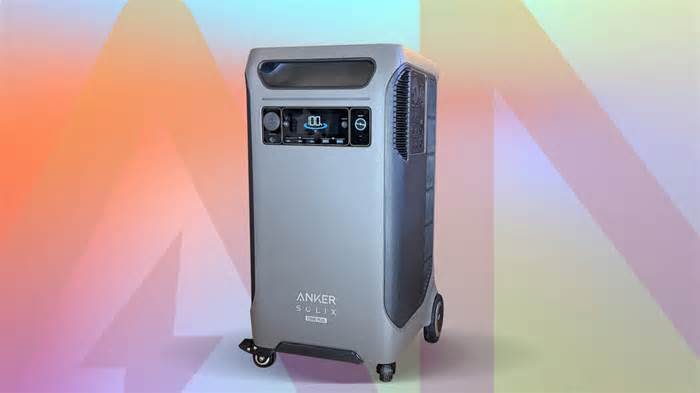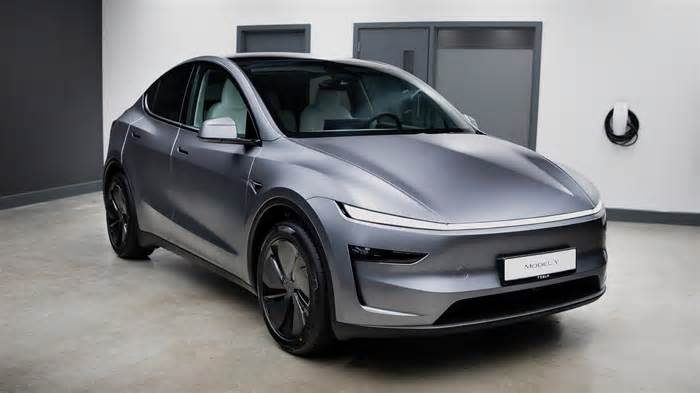
Can a Portable Power Station Beat a Tesla Powerwall? I Put the Anker Solix F3800 Plus to the Test
- by CNET
- Jul 16, 2025
- 0 Comments
- 0 Likes Flag 0 Of 5

Using the Solix F3800 Plus as a whole-home backup
This is not the first whole-home power station backup that I've tested. EcoFlow, set up a Delta Pro Ultra whole-home backup power supply and Smart Home Panel 2 in my home just over a year ago, and I've been using it ever since. That particular setup isn't compatible with Anker's power station, but there are a lot of similarities between the two.
First of all, they're both incredibly heavy. The EcoFlow Delta Pro Ultra requires both a battery and an inverter, which, taken together, tip the scales at over 180 pounds. The Solix power station is a comparatively svelte 120 pounds, and the inverter is built in. They're both expandable and have numerous outputs. The Delta Pro Ultra hides its outputs under covers -- the Solix doesn't bother with that.
Adam Doud/CNET
Both whole-home backup solutions have smart home panels you can optionally purchase. If you intend to use the Solix F3800 Plus as a whole-home backup, I recommend picking it up since it makes the takeover automatic when the power goes out.
Unfortunately, Anker did not send its smart panel solution for testing, which might be for the best since installing electrical panels is not trivial and generally requires permits and electricians. My currently installed EcoFlow Smart Home Panel 2
allows me to assign priorities to various circuits so that when I lose power, I can choose which circuits switch to the battery. I imagine Anker's smart panel works very similarly.
The EcoFlow Power Kit comes with a smart electrical panel that allows you to connect several circuits to its batteries.
Chris Wedel/CNET
In my home, I have my kitchen, my office and one bathroom set to be powered continually on battery power. The rest of the house also stays on until the battery reaches a certain level (I have it set at 40%), and then they'll power off. When I lose power, there's generally a short, 1-second dropout, which automatically powers off my computer and turns off my smart lights. When the battery kicks in, all the lights come back on at full brightness (as they're designed to do).
If you don't go for a smart home panel, you can simply pick up a transfer switch that will allow you to switch back and forth between the battery and the power mains coming into your house. Both Anker Solix and EcoFlow offer those options, but in those cases, they'll be manually controlled, rather than automatic.
How long will the Solix F3800 Plus station last?
During my time with the Anker Solix F3800 Plus, I tested a few appliances to see how long they would last if they were connected to the battery. I tested these devices individually (for the most part; more on that in a bit) to get a good idea of how long this system could last.
I plugged various devices into the power station, including my refrigerator, TV, space heater, clothes dryer and office computer setup. Of those, the space heater ran down the battery fastest, draining the battery in just under 3 hours.
Next, I connected my clothes dryer to the power station for one cycle lasting about 1 hour and 20 minutes, which took the portable battery down from 100% to 88% -- less than I expected. You can probably expect to get about eight cycles out of the portable power station -- handy if you have a long power outage and need to dry clothes for your whole family.
Adam Doud/CNET
It also tackled other appliances handily. The F3800 Plus powered my refrigerator for 12 hours, the longest time I got from my devices and appliances. This was followed by my Hisense 65-inch U8K TV, which the Solix F3800 Plus kept running for another 7 hours.
Then I connected all of my office devices to it for another eight hours. My office has a Lenovo Legion Tower 5i, three monitors (28-inch Lenovo, 24-inch Samsung and 32-inch Monoprice), a set of Logitech PC speakers, several clamp lights and various other devices (phones, charging stations, etc). The F3800 Plus kept all of these running for a full 8-hour shift finishing at 26% at the end of the workday, meaning I still had several hours of time to spare if I needed it.
Adam Doud/CNET
The Solix F3800 Plus boosts solar input by 30% and now also supports integration with a gas generator. You can connect up to eight 400-watt solar panels
to charge this power station. According to Anker, under "optimal conditions," the power generator can recharge fully in 1.5 hours. That's impressive because when connected to a normal 120-volt plug, my testing put charge time at just 5 minutes shy of 3 hours.
Basically, as long as you're frugal with what you want to power and it's not winter, this power station can easily backup your home for several hours. With the addition of solar panels and gas generators, it can keep you running off-grid indefinitely, which could be huge if you're in a storm-prone area where your power might be knocked out for a week or more.
Pros and cons of a portable power station as a home backup
Adam Doud/CNET
Please first to comment
Related Post
Stay Connected
Tweets by elonmuskTo get the latest tweets please make sure you are logged in on X on this browser.






 Energy
Energy


















